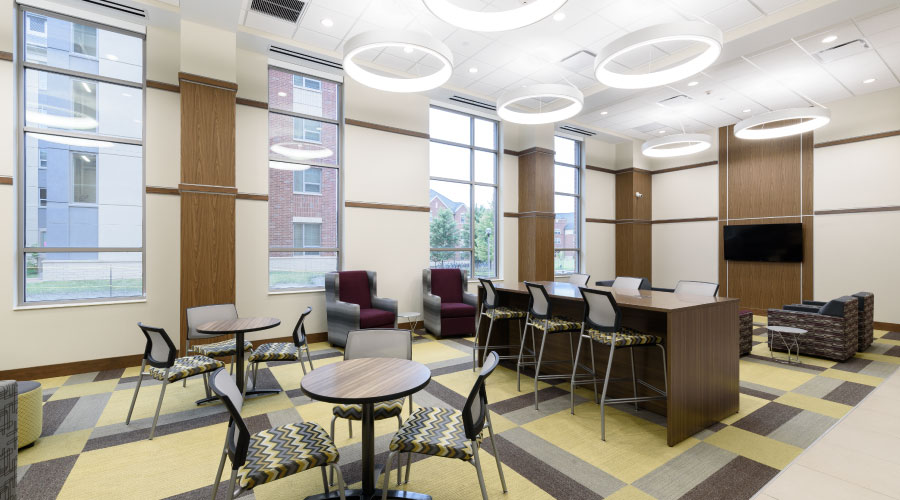New Lighting Technology Can Bring New Challenges
With many of the opportunities afforded by new lighting technology come new issues. New technology can sometimes create new, unforeseen challenges, which then need to be dealt with. Calculating savings with care and the variance in the quality of LED systems are additional issues.
Some SSL systems may create new glare sources when their intense points of light get reflected off specular surfaces such as telephones, windows, polished tables, and glass-covered artwork. Fixtures or kits that use lenses, diffusers, or indirect lighting may be essential to mitigate that problem.
Many SSL devices cannot be dimmed using existing controls without causing visible flicker. New dimmers — chosen from lists of equipment known to be compatible with SSL units — are often the answer, adding unplanned cost to an upgrade.
While SSL devices may eliminate the need to regularly re-lamp, they don't eliminate the need to clean fixtures. Significant lumen depreciation may occur due to buildup of dirt that would otherwise be removed during the relamping process. Claimed labor savings due to avoided relamping should not be exaggerated by assuming zero attention to fixtures for many years.
The quality of LED systems varies widely. "Up until recently, there's been more bad than good SSL equipment," says Fetters, "but things are getting better." He also points to compatibility of controls as an ongoing issue, especially with outdoor lighting. Warren warns that "some of these technologies involve new subtleties, such as color temperature and glare for residential street lighting. Too often, they've thrown out the book on comfort." Look for devices listed with the DesignLights Consortium (DLC) or having a DOE Lighting Facts label. Each means that an independent lab has tested samples to verify manufacturer claims for efficiency, color, etc.
A sharper pencil may also be needed when calculating savings. Once high-efficiency lamps and ballasts are installed, potential savings from adding controls may be greatly reduced, making their incremental payback too long to be acceptable.
Regardless of the technology, experts recommend doing several mockups to assess ease of installation and occupant acceptance, before committing to a major purchase. Keep the mockups in place for several weeks to ensure there are no glare or other issues that might only become apparent as conditions vary.
When pursuing any cutting edge or high-tech opportunities, don't skimp on the expertise. Warren says that "with the many parties involved in a lighting project nowadays, a good consultant can handle specs and documentation so that, if anything goes wrong, he can pinpoint the one throat to choke."
Lindsay Audin is president of EnergyWiz, an energy consulting firm based in Croton, N.Y. He is a contributing editor for Building Operating Management.
Financial Incentives Encourage Lighting Upgrades
Another push to re-upgrade lighting comes from increased financial incentives.
While some federal tax incentives for energy efficiency have waned, others at the state and/or utility level have risen. Some jurisdictions now offer property tax abatements or credits for buildings attaining LEED status, which requires better-than-code lighting efficiency.
Unlike early energy efficiency rebates that paid based on mere one-for-one equipment replacement, many of today's incentive programs pay based on wattage reduction as well as cuts in kWh.
"Rebates are a great way to get real estate people interested in upgrading. They hate to leave any money on the table," says John L. Fetters (CLEP), owner of Effective Lighting Solutions.
On the other hand, some rebates may be about to disappear. Some utilities or state agencies have indicated that they will soon drop rebates for T8 lamps and electronic ballasts because the old T12 lamps and magnetic ballasts (under federal law) are no longer made, sold, or imported for use in commercial buildings. Nobody gets paid to obey the law, so other options (e.g., T8s) will then become essential. Why not get money to install them now, before it's gone?
|
Related Topics:














